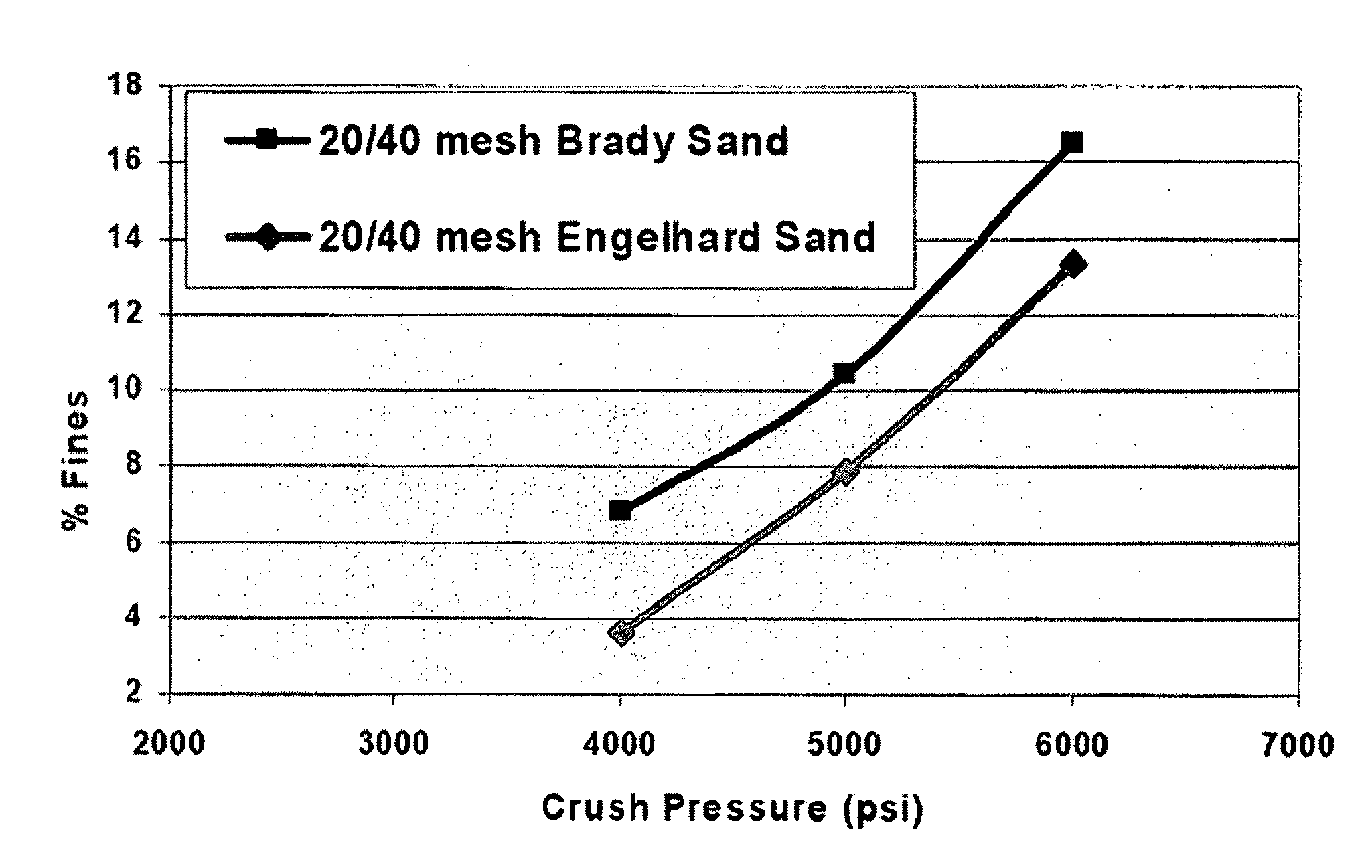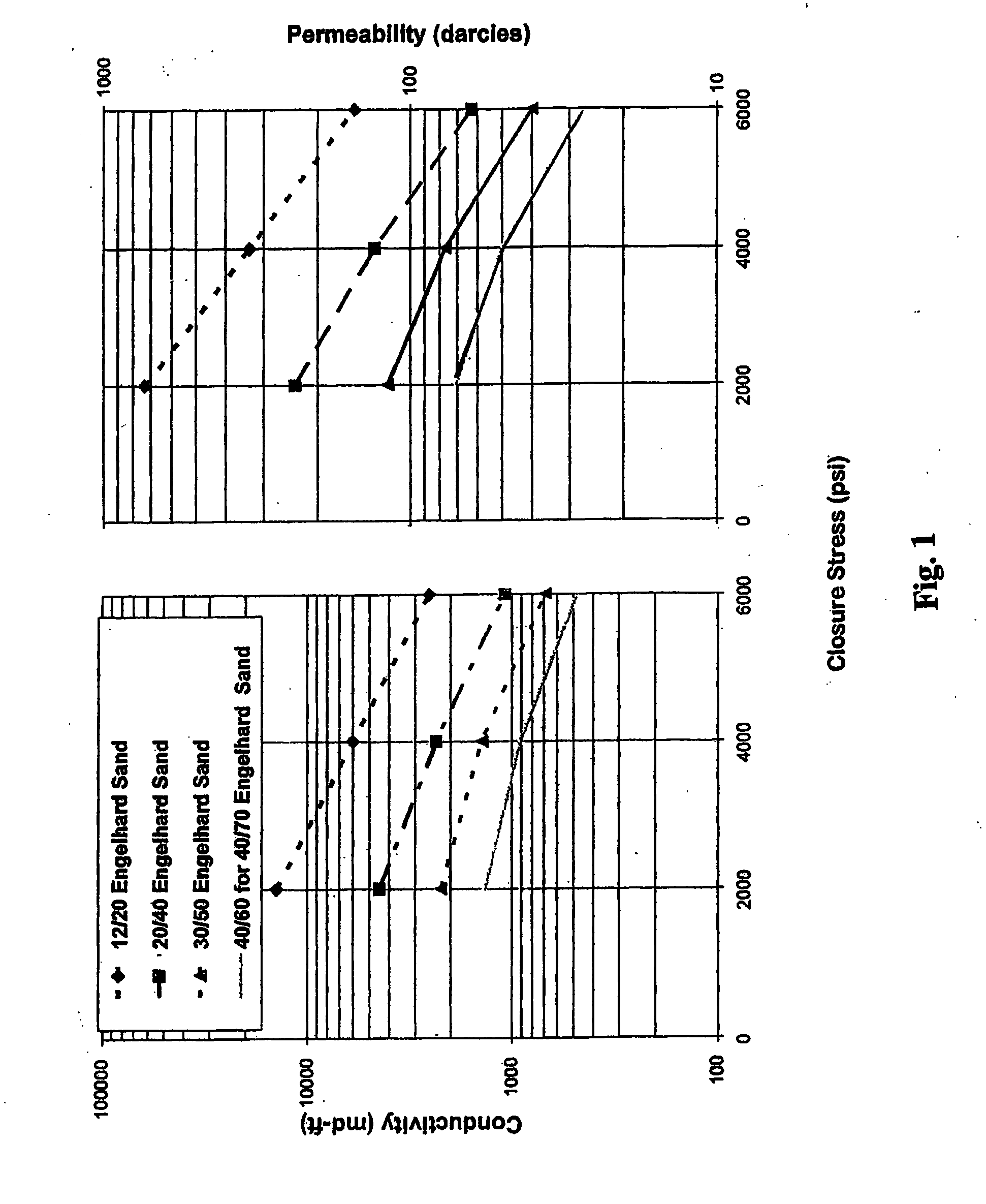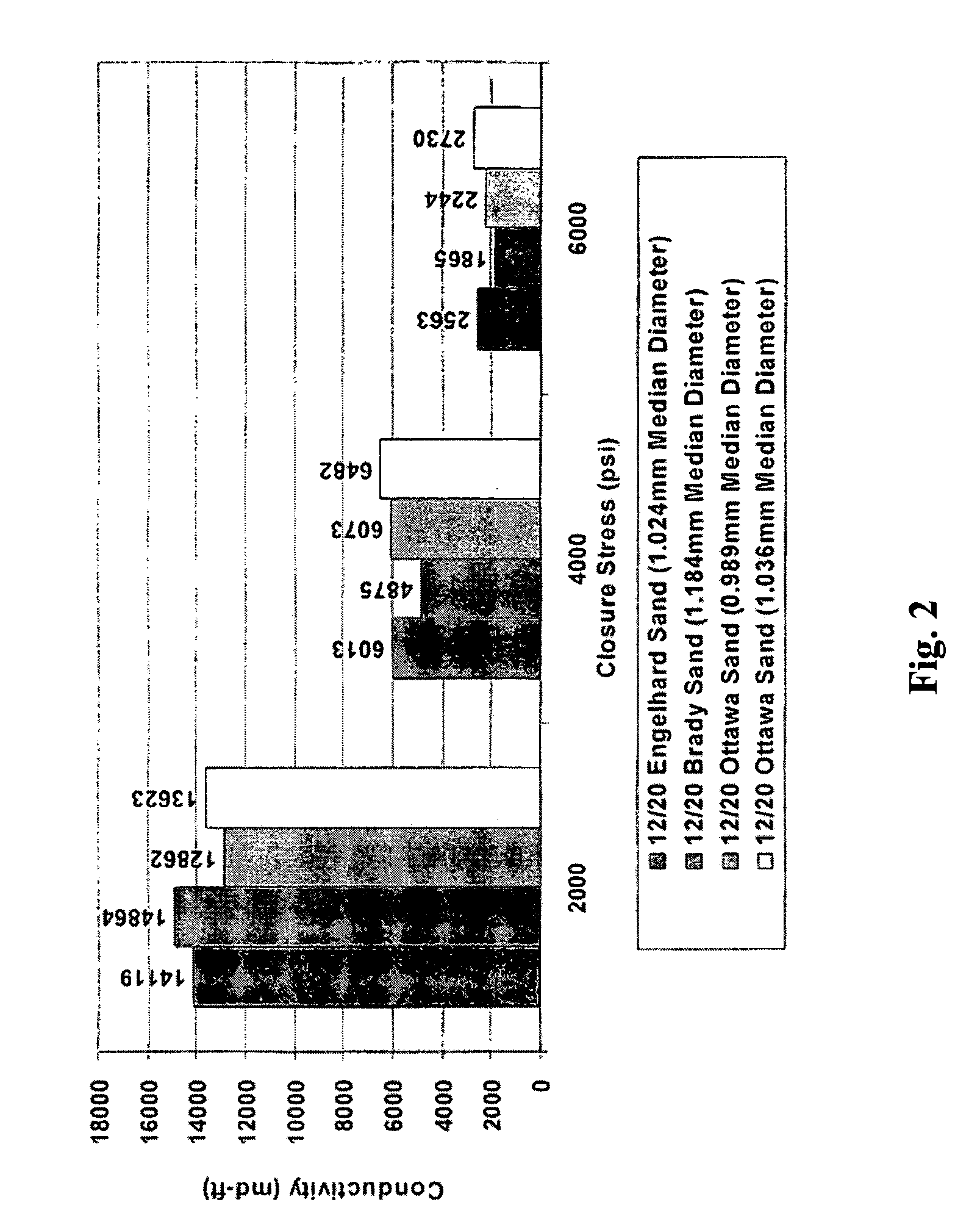[0007] Embodiments of the invention relate to proppants and methods of use. The particles according to the various embodiments exhibit desirable crush resistance, sphericity, roundness, acid solubility, and turbidity, as determined by American Petroleum Institute Standard Recommended Practice 56 (RP-56). (See Recommended Practices for Testing Sand Used in Hydraulic Fracturing Operations, API Recommended Practice 56 Second Edition, December 1995, American Petroleum Institute). Other embodiments of the invention pertain to a method of propping open fractures during a hydraulic fracturing operation in a subterranean zone comprising placing the proppant particles of the various embodiments described herein in the fractures.
[0008] According to a first embodiment, a proppant comprises sand particles having a sand mesh size of 40/70, a median diameter of between about 0.20 mm and 0.40 mm, a crush resistance of less than about 10% fine particles by weight produced at a crush stress of about 5000 psi and turbidity of less than about 100 FTU, preferably less than about 50 FTU. In preferred embodiments, the 40/70 mesh sized proppant particles have a median particle diameter of about 0.32 mm, a crush resistance of less than about 5% maximum fine particles produced at a crush stress of about 5000 psi and a turbidity of less than about 20 FTU. In a particular embodiment, the 40/70 mesh sized proppant particles, the particles are sized such that between about 4 weight percent and 6 weight percent of the particles are retained on a mesh size 40 sieve, between about 20 weight percent and 25 weight percent of the particles are retained on a mesh size 45 sieve, between about 32 weight percent and 37 weight percent of the particles are retained on a mesh size 50 sieve, between about 32 and 37 weight percent of the particles are retained on a mesh size 60 sieve and between about 0.5 and 2 weight percent of the particles are retained on a mesh size 70 sieve. According to one embodiment, the 40/70 mesh sized proppant particles exhibit a sphericity exceeding about 0.75 and a roundness exceeding about 0.65. Another feature of the 40/70 sized proppant particles is that the specific gravity of the particles is between about 2.55 and 2.65. In a particular aspect, the 40/70 mesh sized particles have a median diameter of about 0.32 mm and being sized such that about 5.5 weight percent are retained on a 40 mesh sieve, about 23.3 weight percent are retained on a 45 mesh sieve, about 35.0 weight percent are retained on a 50 mesh sieve, about 34.8 weight percent are retained on 60 mesh sieve and about 1.4 weight percent are retained on a 70 mesh sieve.
[0009] In another embodiment, a proppant is provided which comprises sand particles having a 30/50 mesh size, a median diameter of between about 0.35 mm and 0.45 mm, a crush resistance of less than about 10% fine particles produced at a crush stress of about 4000 psi and a turbidity of less than about 100 FTU, preferably less than about 50 FTU. In a preferred embodiment, the median diameter of the 30/50 mesh sized particles is about 0.42 mm, have a crush resistance of less than about 3% fine particles produced at a crush stress of about 4000 psi and a turbidity of less than about 30 FTU. In a particular embodiment, the 30/50 mesh sized particles are sized such that between about 4 weight percent and 6 weight percent of the particles are retained on a mesh size 30 sieve, between about 20 weight percent and 25 weight percent of the particles are retained on a mesh size 35 sieve, between about 20 weight percent and 25 weight percent of the particles are retained on a mesh size 40 sieve, between about 20 and 25 weight percent of the particles are retained on a mesh size 45 sieve, between about 25 and 30 weight percent of the particles are retained on a mesh size 50 sieve, and between about 0.2 and 1 weight percent of the particles are retained on a mesh size 60 sieve, and the particles exhibiting a sphericity exceeding about 0.75 and a roundness exceeding about 0.70. According to one embodiment, another feature of 30/50 mesh sized proppant particles of is that the specific gravity of the particles is between about 2.55 and 2.65. According to a particular embodiment, the 30/50 mesh sized proppant particles are sized such that about 4.6 weight percent are retained on a 30 mesh sieve, about 22.8 weight percent are retained on a 35 mesh sieve, about 23.1 weight percent are retained on a 40 mesh sieve, about 22.1 weight percent are retained on 45 ...
 Login to View More
Login to View More  Login to View More
Login to View More 


